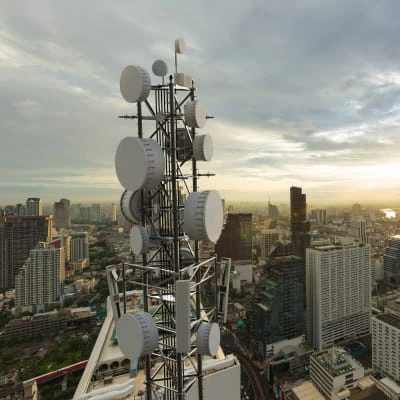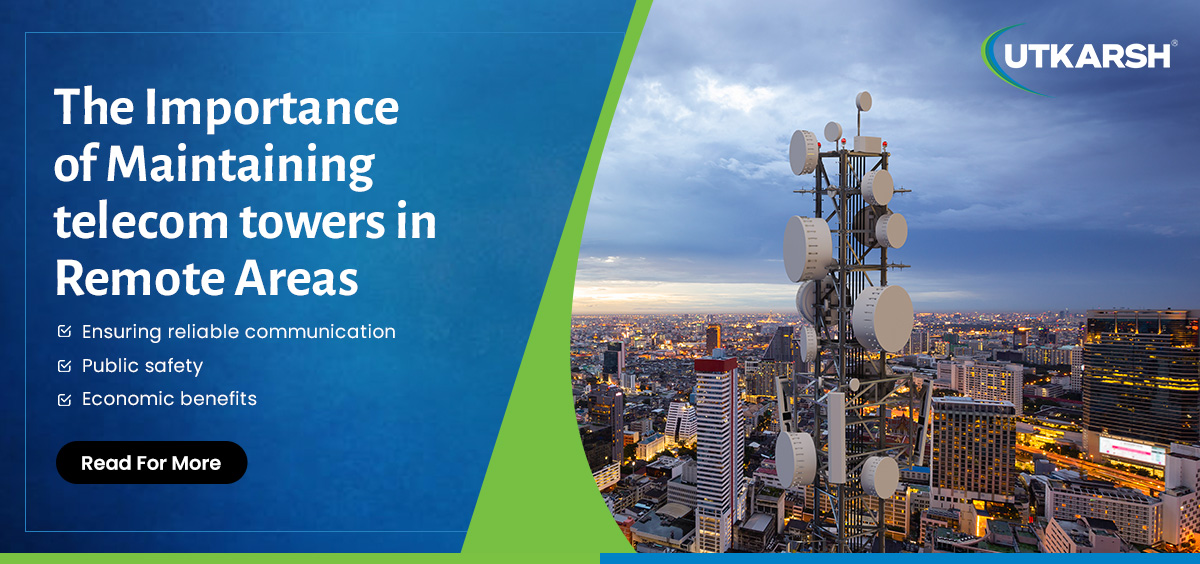Telecom Tower Structures
In the rapidly evolving landscape of technology and mobile phone penetration, there has been a rising need for the installation of a large number of mobile communication towers for an increase in coverage area and to meet the demand for network consistency. Telecommunication towers play a crucial role in providing strong network signals for wireless communication. A durable and well-constructed telecom tower structure ensures reliable connectivity and prevents network failures.
At Utkarsh
India, we specialise in manufacturing a wide range of products, from 9M Roof
Top Tower (RTT) to 60M Ground-based Towers. Our state-of-the-art manufacturing
facilities, in-house testing, and excellent logistics and dispatch department
enable us to design, manufacture, and supply telecommunication towers.
In addition
to telecommunication towers, Utkarsh India is well-known for PLB ducts, HDE
pipes, street light poles, high masts, lighting systems, traffic signal poles,
steel tubular poles, CCTV poles, and other traffic structure solutions.
Different Types of Telecom Tower Structures and Their Benefits
Telecommunication
towers play a crucial role in providing the necessary structure for signal
transmission and network coverage. Telecom tower manufacturers and
communication tower manufacturers design different types of structures, each
serving specific needs and environments. Let us take a closer look at the
various types of telecom towers and their distinct advantages in more detail.
Lattice
Tower
Lattice towers are self-supporting towers or free-standing towers engineered with a triangular or rectangular steel base. These structures are designed to mount antennas, multiple panels, and various attachments essential for telecommunication towers and network towers.
Benefits of lattice towers:
1.
Flexibility: The lattice tower has excellent flexibility in terms of upgrades;
it easily holds additional equipment.
2.
Heavy-load capacity: The design of the lattice tower makes it ideal for
supporting substantial weights of electricity transmission and extensive
equipment.
3. Versatile
usage: Lattice towers facilitate widespread signal transmission and observation
towers, offering panoramic views for surveillance, meteorology, and tourism.
Tubular
Tower
Tubular
towers, or mobile towers, are conical-shaped towers that offer seamless and
reliable network coverage, catering to the demands of urban and remote areas.
Benefits of Tubular towers:
1. High
strength and durability: The seamless tubular section of the tower provides
robust strength and ensures network reliability.
2. Enhanced
Connectivity: Strategically positioned in deserted areas, these tubular towers
extend network reach and improve connectivity.
3. Effective
in urban and rural areas: Tubular towers ensure seamless and reliable network
coverage in both urban and remote areas.
Angular
Tower
Angular towers are 3-legged steel structures known by their triangular shape. The three vertical legs, or columns, of angular towers are connected at the top.
Benefits of Angular Towers:
1.
Cost-effective: Angular towers are an affordable solution for small towers with
light load requirements and reduced installation costs.
2. Support
and stability: The angular structure of these telecom towers makes them
efficient to withstand harsh weather conditions, ensuring excellent stability.
3.
Space-efficient: Angular towers require minimum space and hence are primarily
installed on the rooftops.
Ground-Based
Tower
These telecommunication tower foundations are installed on the ground and have highly competitive load-bearing capacity.
Benefits of Angular Towers:
1. High-load
bearing capacity: Ground-based towers support up to 12-panel antennas and three
0.6-metre-diametre microwave dish antennas.
2. Optimal
signal reach: The ground-based structure's height ranges from 30-200 metres,
providing essential vertical reach for optimal signal transmission.
3. Sturdy
foundation: Built with a strong base, these structures ensure superior
stability and reliability in mounting communication equipment and antennas.
Roof-top
Tower
A roof-top telecommunication tower, as the name suggests, is installed on the roof-top of a high-rise building. It features raised columns and tie beams for a seamless blend with the architectural landscape
Benefits of Roof-top Tower:
1. Ease of
installation: A rooftop tower can be installed quickly and requires minimum
space and foundation work, providing you with easy installation.
2.
Cost-effective: Since the rooftop tower doesn’t require much installation and
foundation work, it is a cost-effective option for urban, modern spaces.
3. Minimal
impact on surroundings: Rooftop towers have a small footprint and blend with
existing building structures, minimising their environmental impact.
-
With 40 years of manufacturing excellence and a team of 100 engineers working across the country, Utkarsh India Limited is a trusted name in the Infrastructure industry.
Related Products
FAQs
The specific materials used in the construction of Utkarsh India's telecommunication tower structures include galvanised steel, steel pipes, rolled steel joists (RSJ), and various sizes of steel angles.
Yes, Utkarsh India's telecom tower structures comply with industry standards and regulations, ensuring structural reliability and network consistency.
Utkarsh India offers various foundation options such as concrete, anchor bolts, screw piles, grillage, and raft foundations, catering to diverse site conditions and project needs.
Utkarsh India customizes telecom tower structures to specific height or load-bearing requirements, offering solutions from 9M Roof Top Towers to 60M Ground-Based Towers, ensuring compatibility with diverse project needs.
When installing a telecommunication tower, the tower operators should take special safety precautions for the local population. Site selection should be done to choose a location that adheres to regulatory compliance and provides adequate coverage. Structural integrity should be taken into consideration to meet the local weather conditions and ensure the towers can withstand wind loads and potential flooding. By following these guidelines, operators can ensure a safe and efficient tower installation process.
Telecommunication towers are anchored to the ground using various methods. The most common method used for guyed towers is guyed wire anchors. These anchors ensure the stability of telecom towers. The anchors are typically buried in the ground, with guyed wires running from the towers to these anchors.
The range of a telecom tower can vary depending on diverse factors, including tower height, antenna type, and many more factors. However, a typical telecom tower's coverage generally ranges from 1.6 to 35.4 kilometres.
Have enquiries? Drop them here..
Explore our insightful articles and expert perspectives on key topics related to our range of products.



